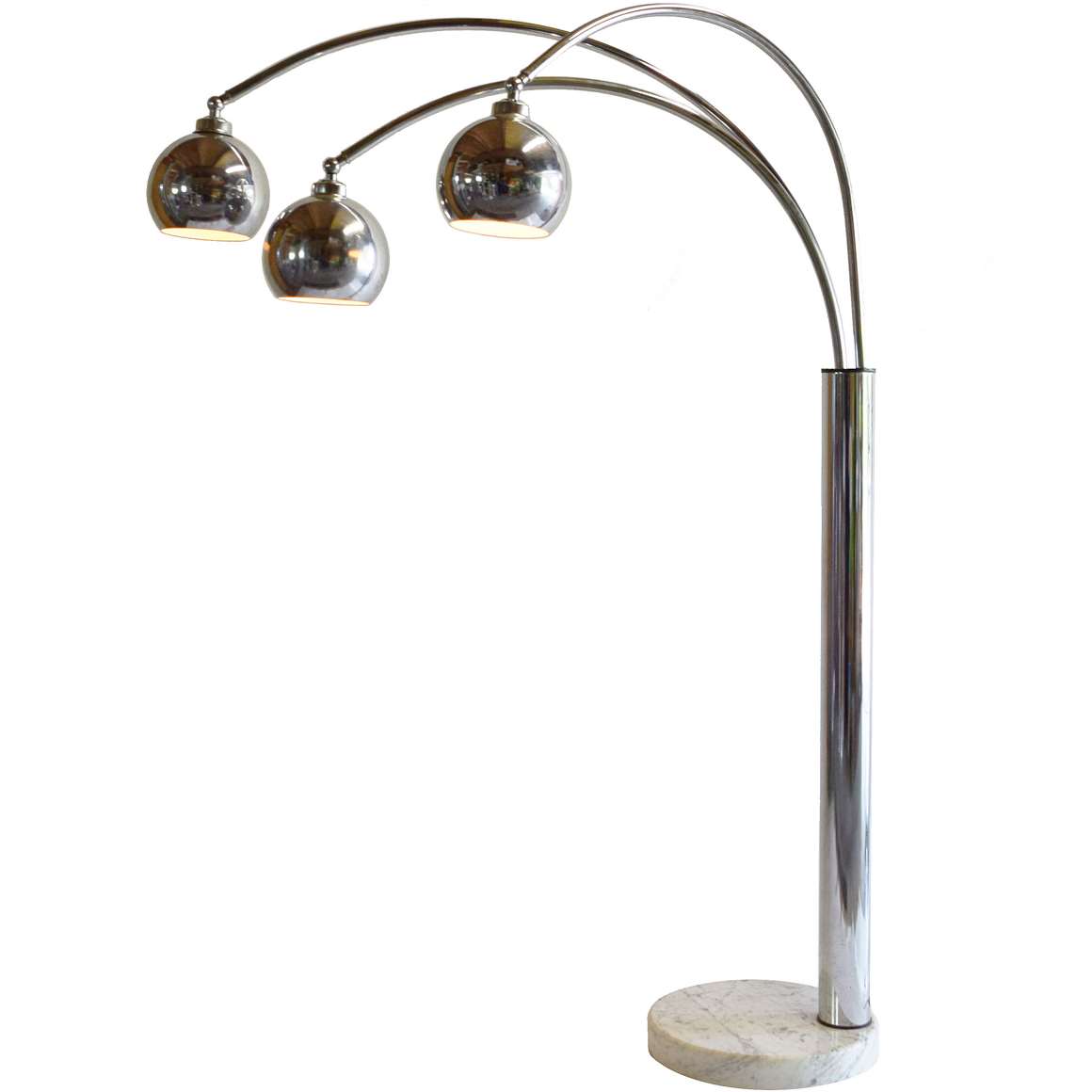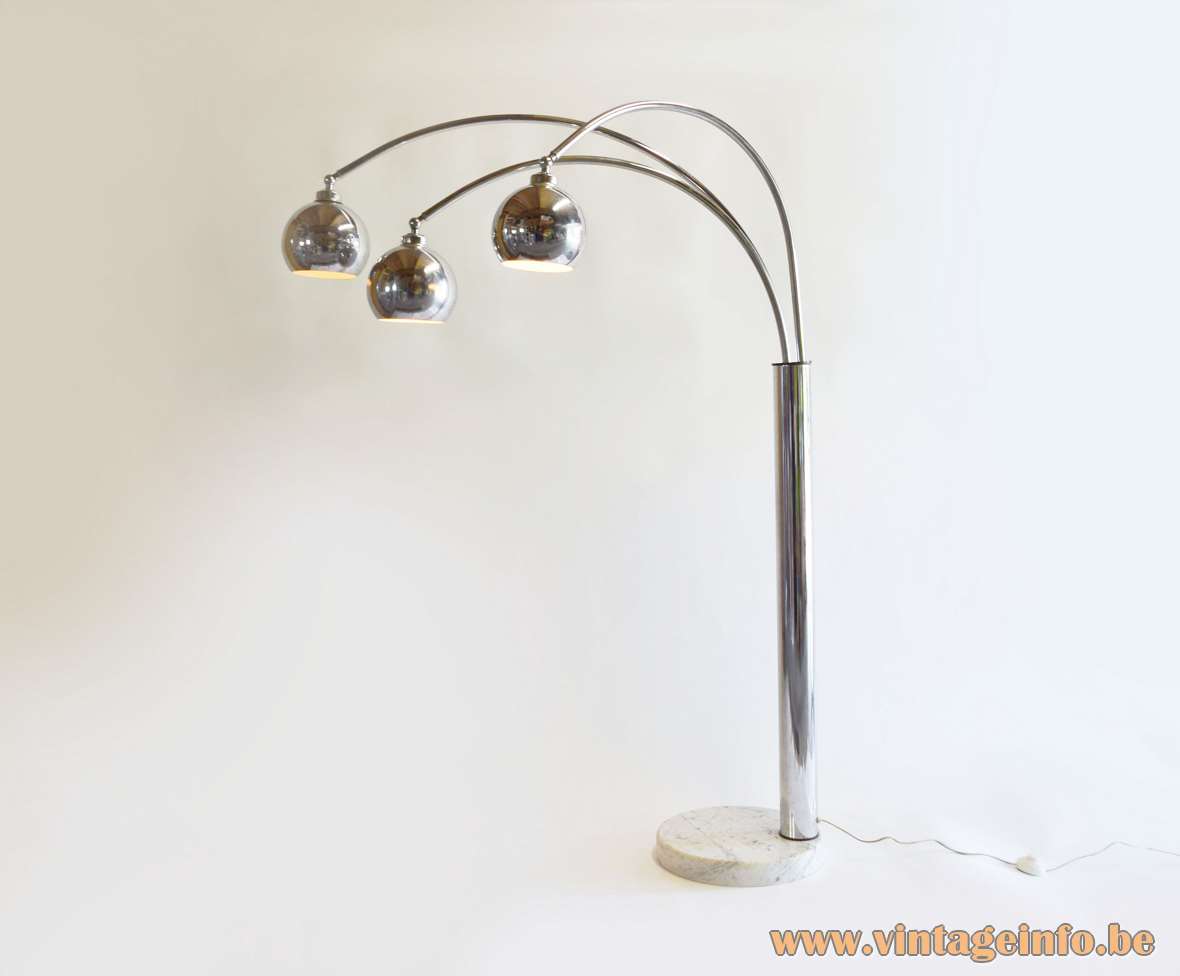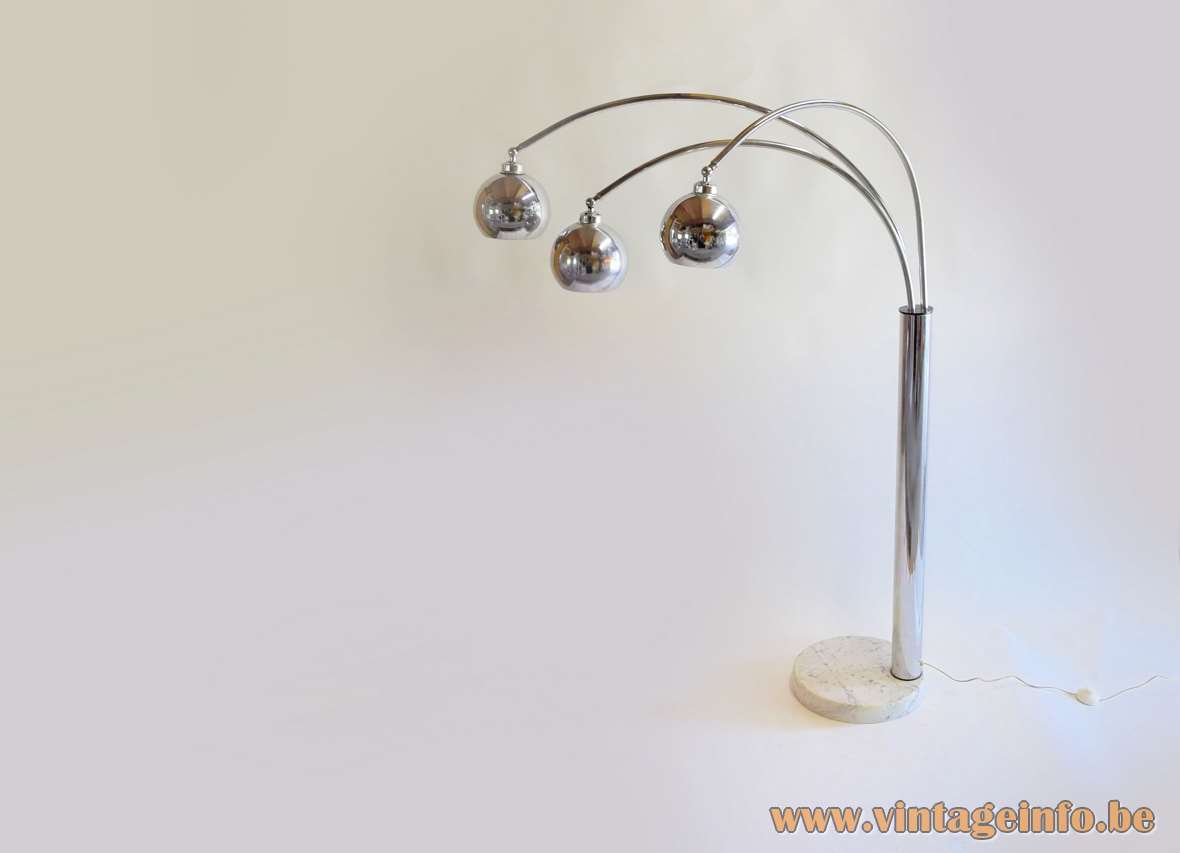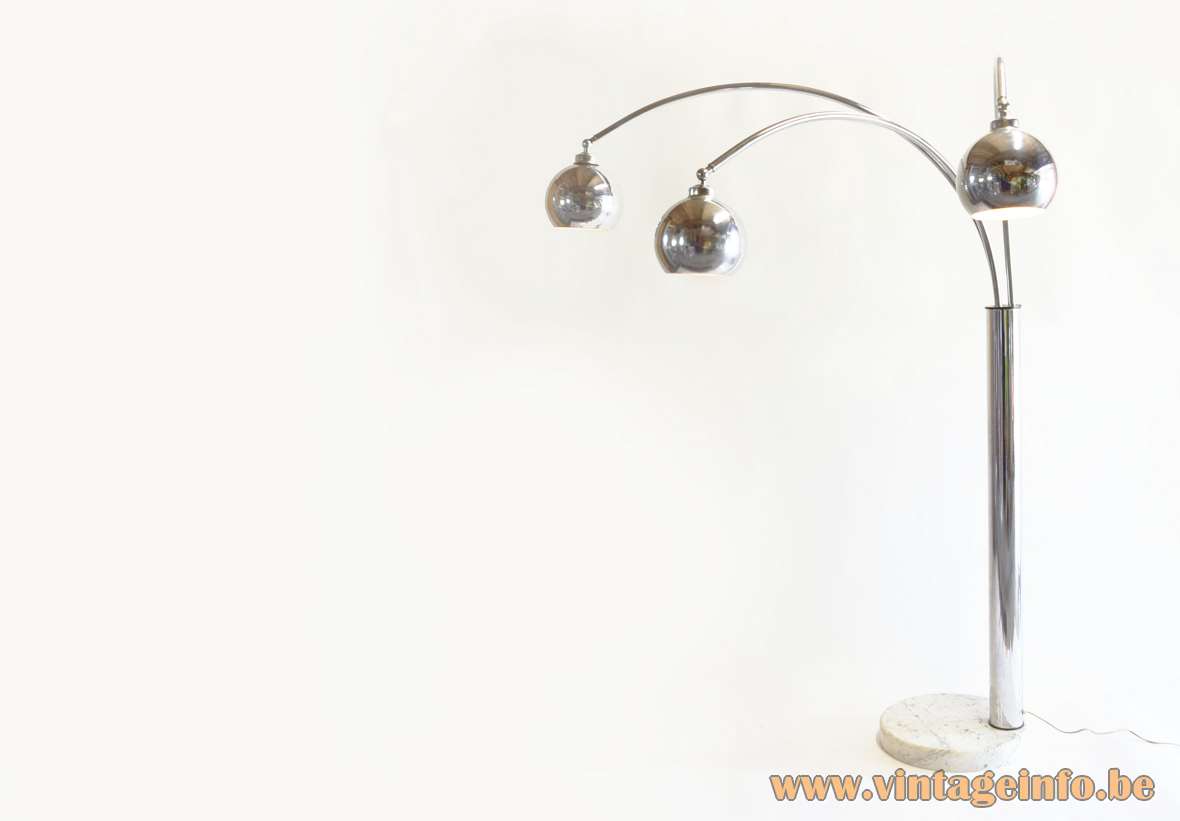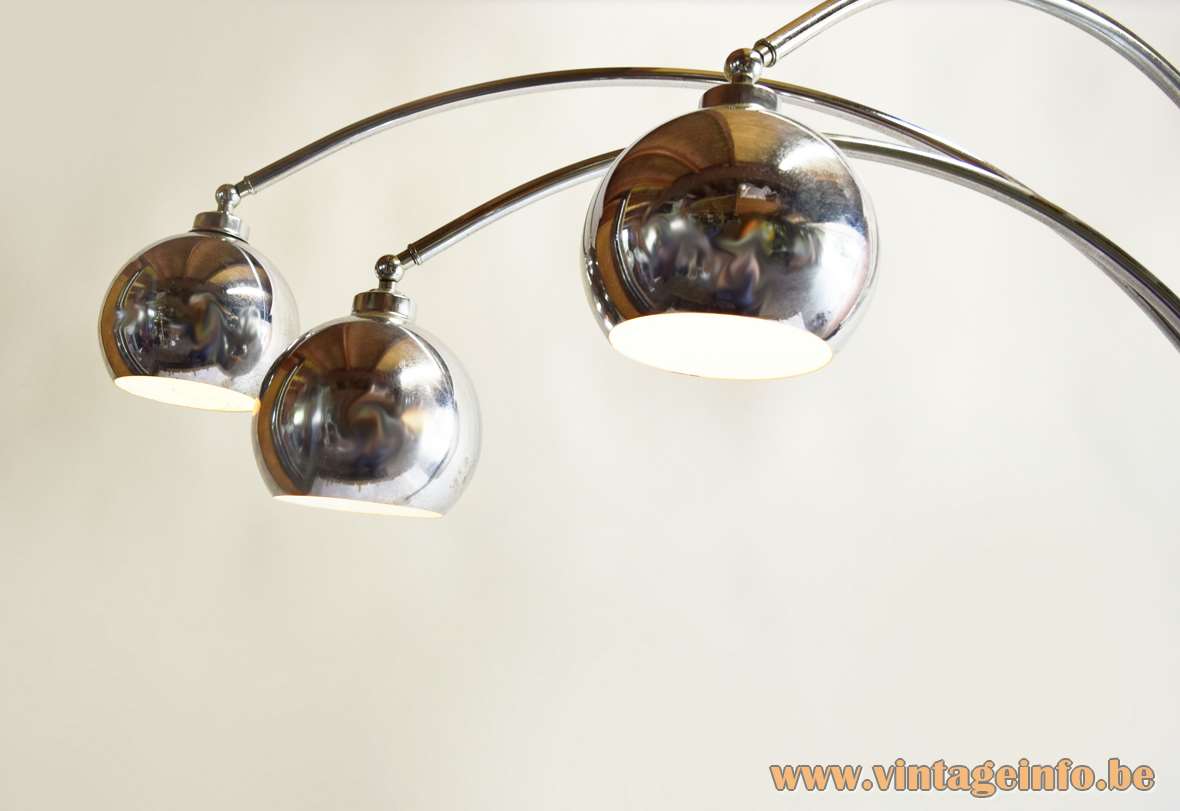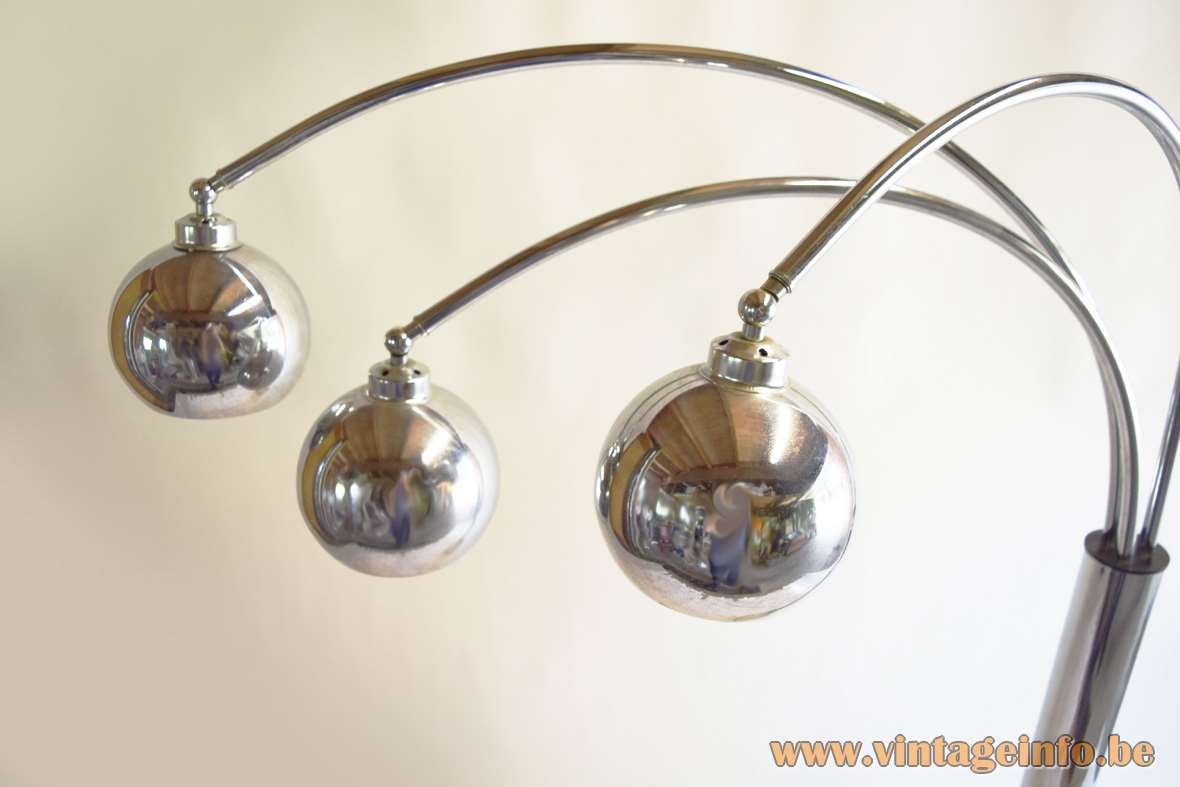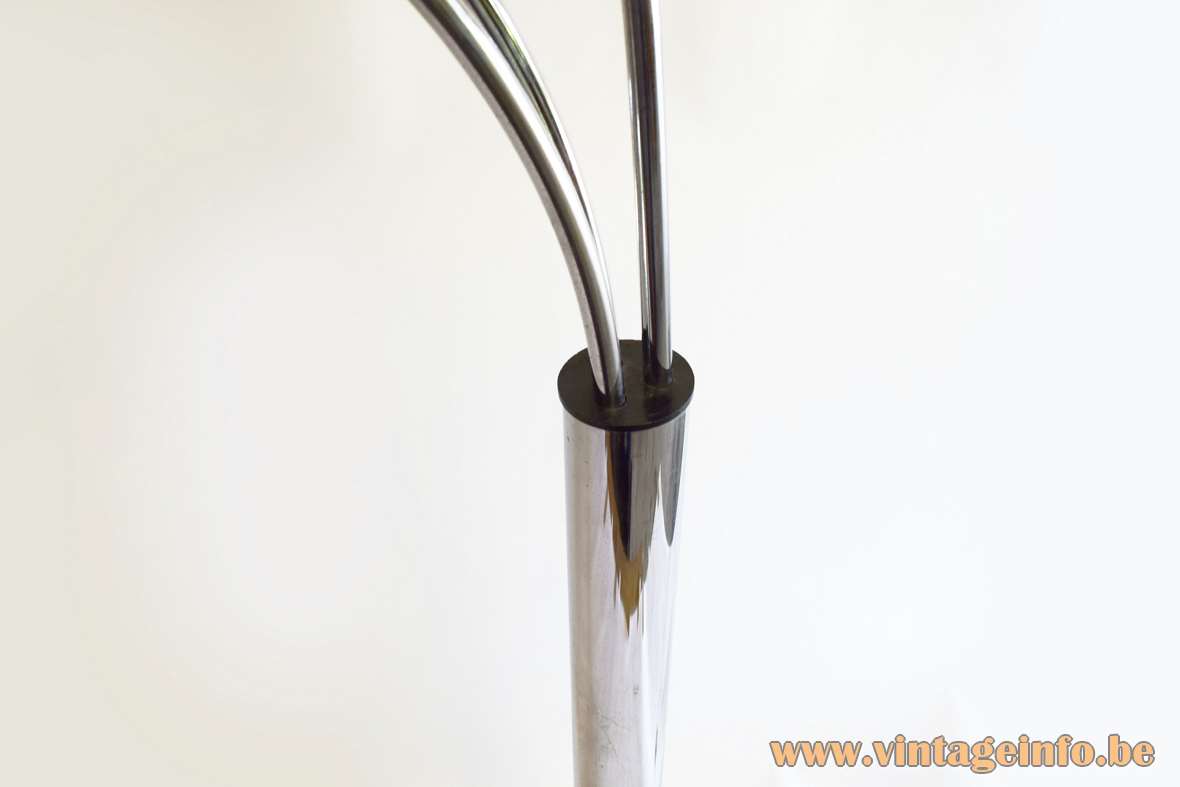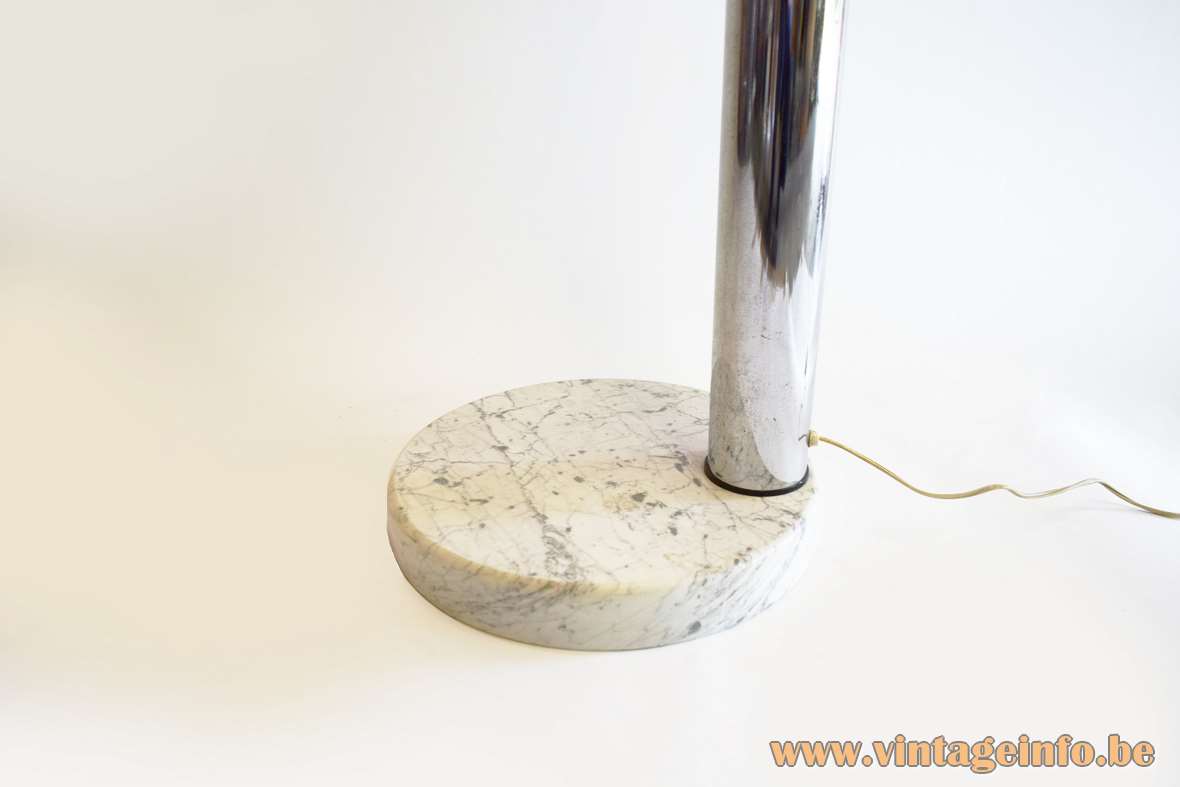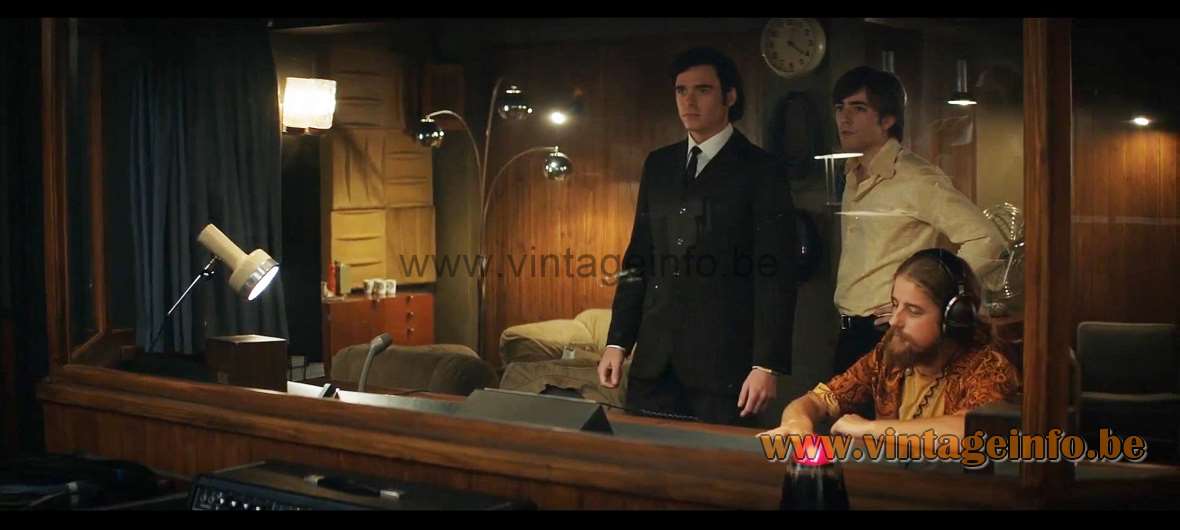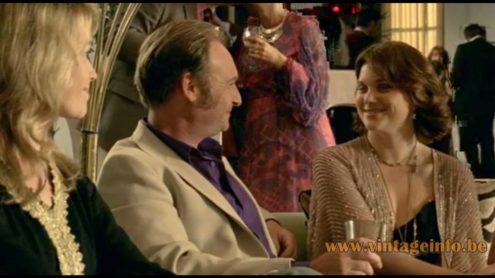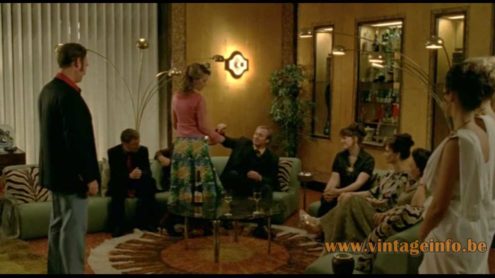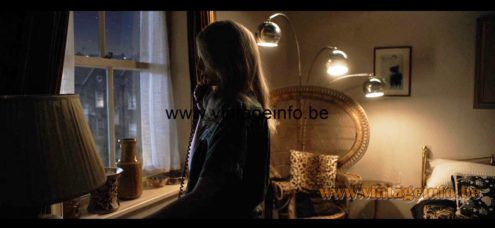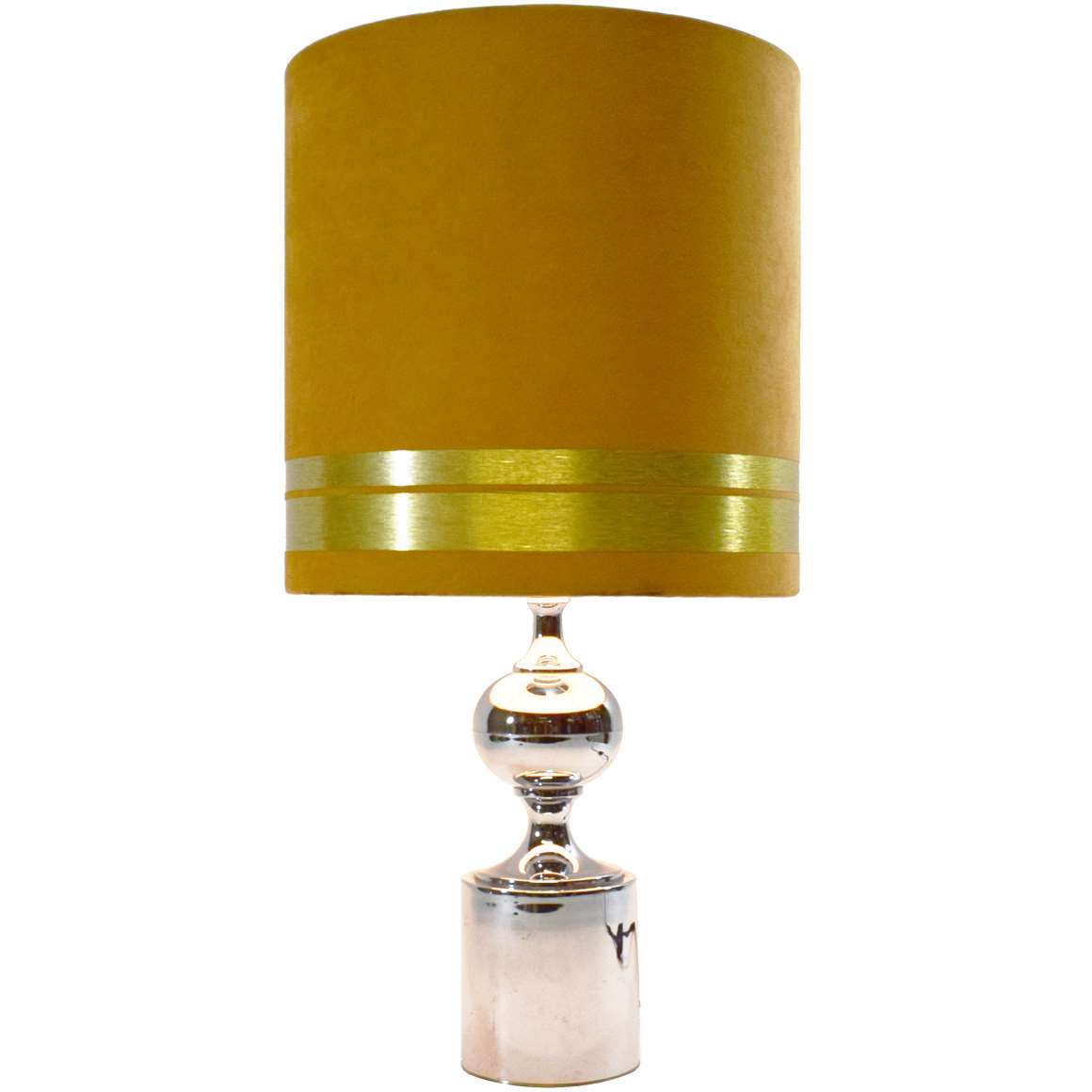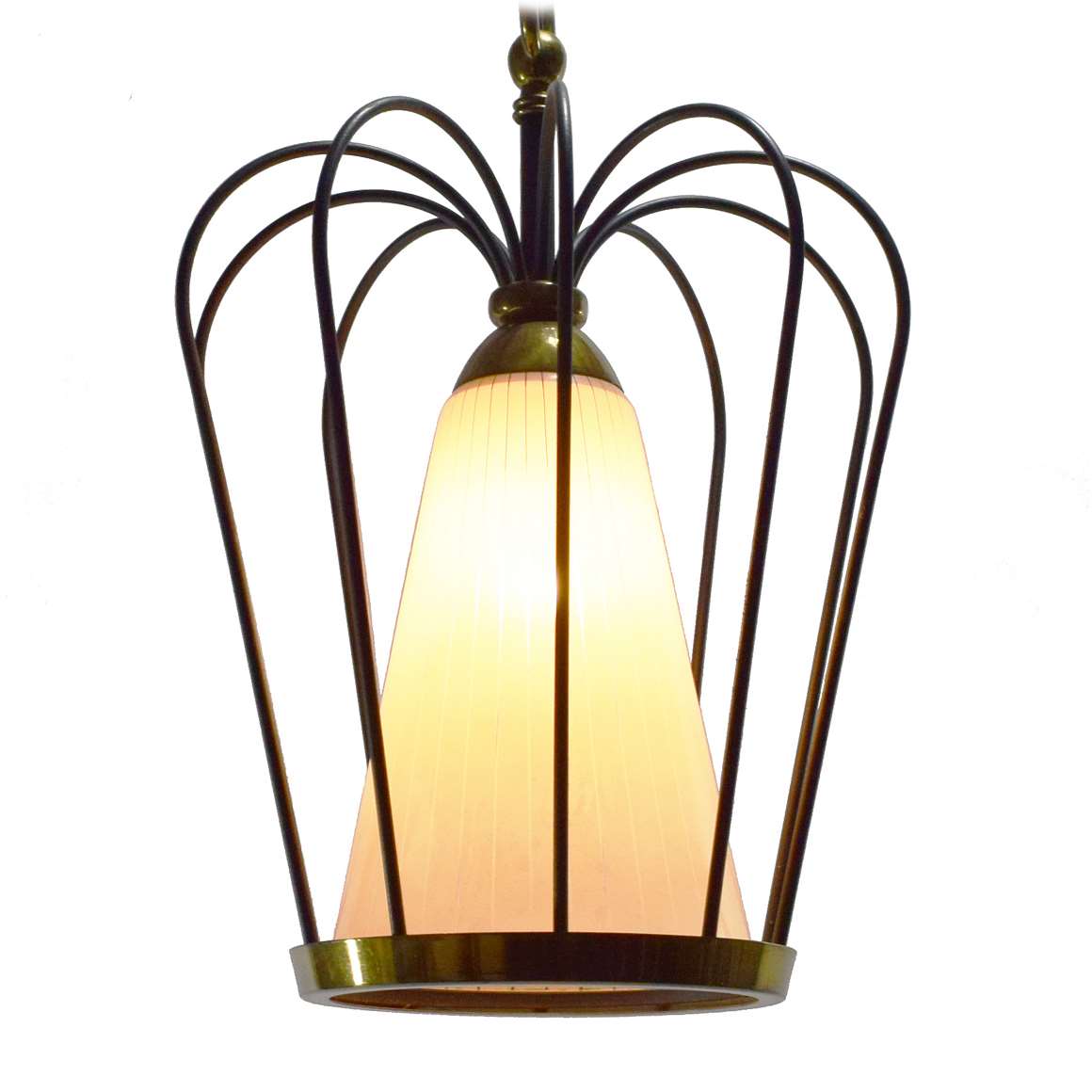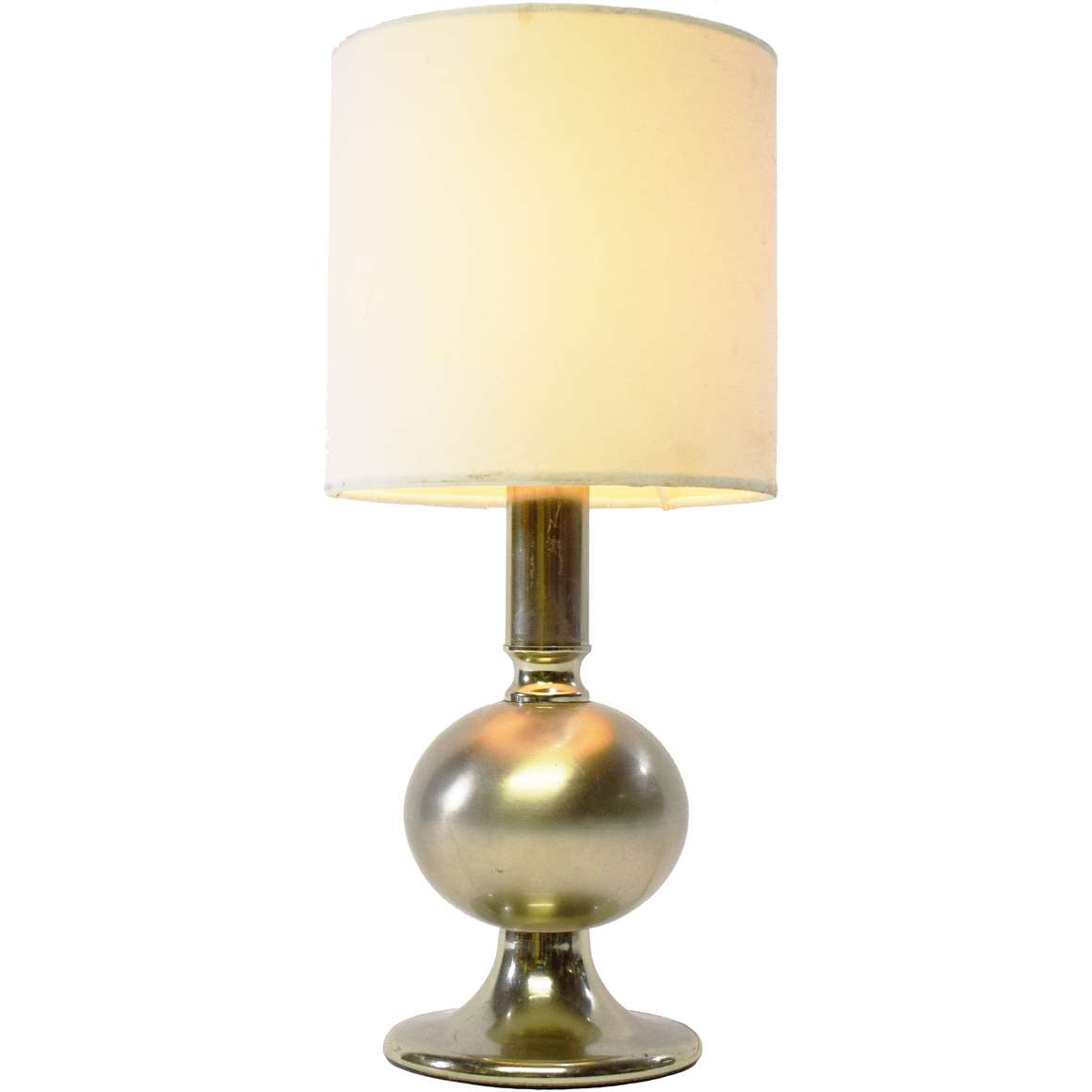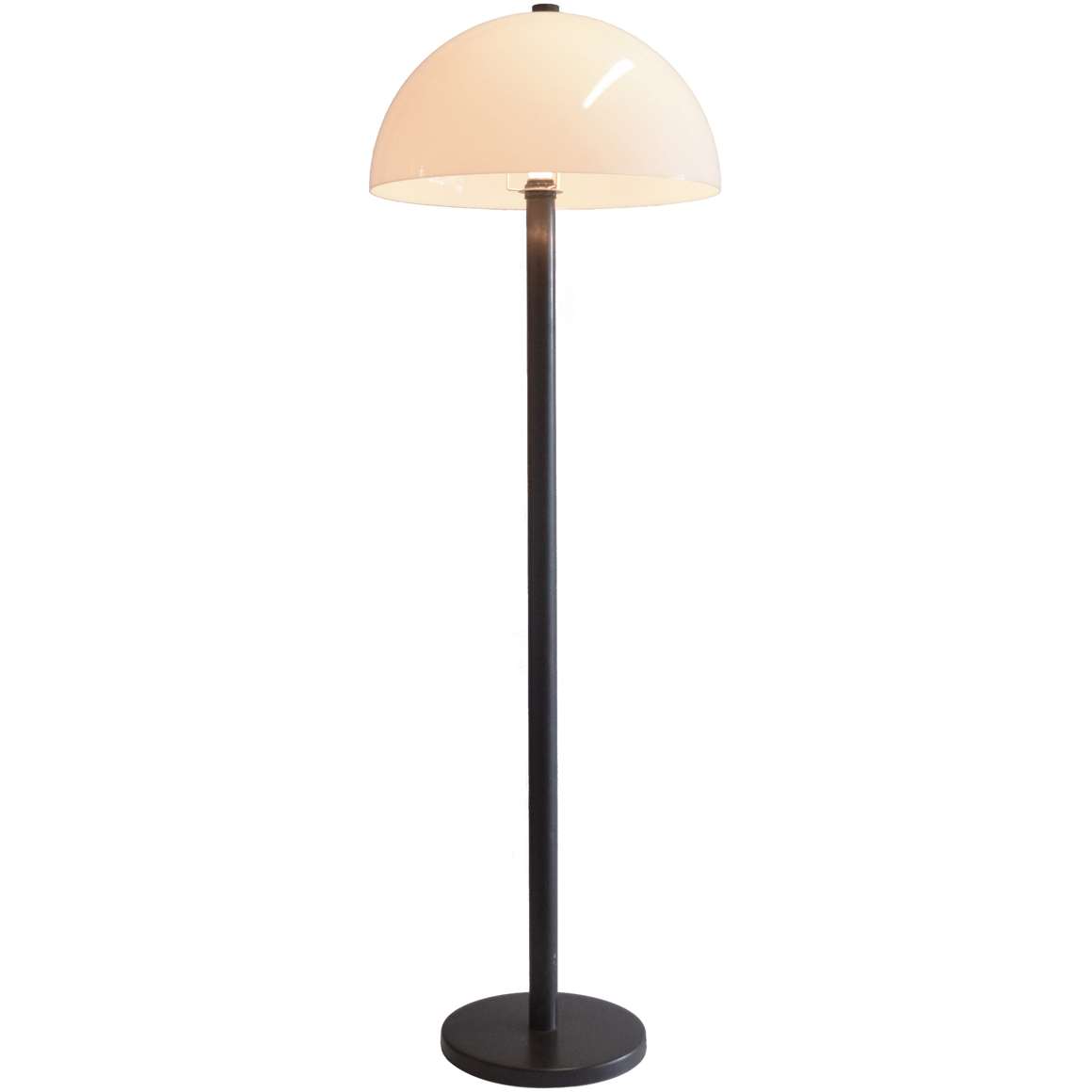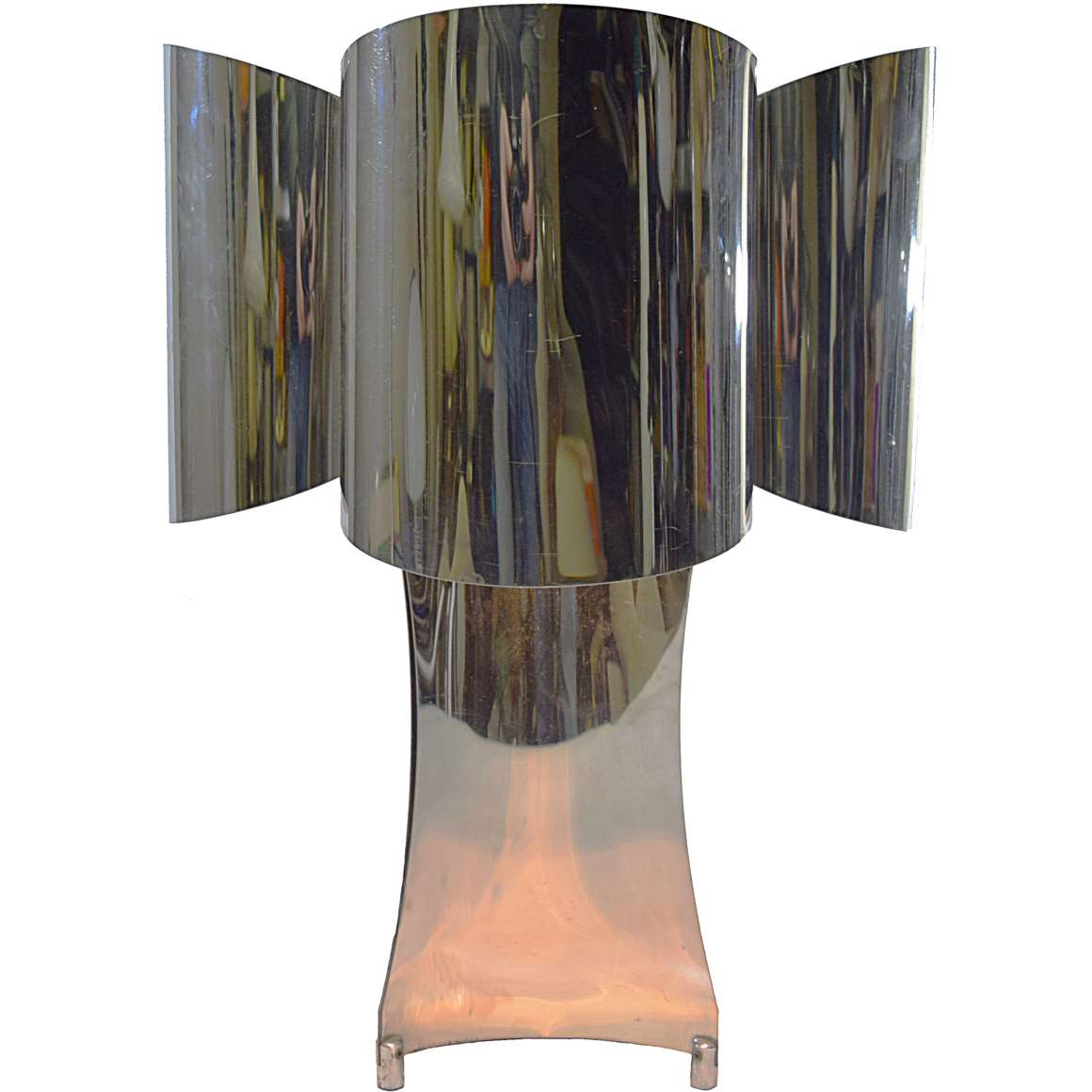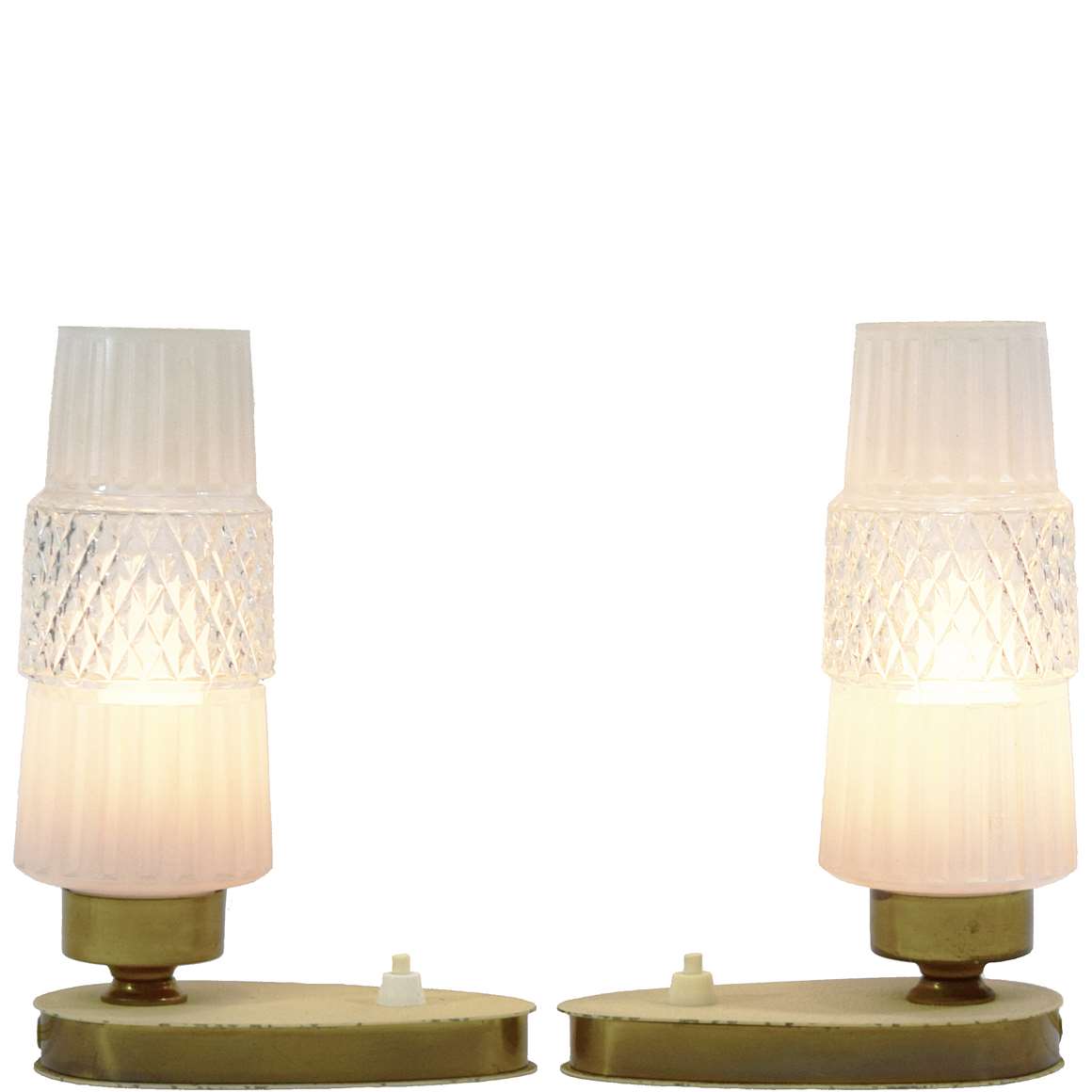Marble And Chrome Eyeball Floor Lamp
Lamps In The Movies!
Rocketman (2019)
A Reggiani marble and chrome eyeball floor lamp was used as a set decoration in Rocketman, the 2019 biographical musical film based on the life of musician Elton John.
Life On Mars (2006)
2 marble and chrome eyeball floor lamps, but with more and different lampshades, also made by Massive, were used as a set decoration in the 2006 – 2007 British science fiction and police series Life On Mars. Starring John Simm, Philip Glenister and Liz White. As you can see, the black plastic connector is skewed by the rods. The series is situated in 1973, long before these lamps were made. Today (2020) Chinese copies are for sale in several online shops white names such as “Five finger floor lamp”.
Bohemian Rhapsody (2018)
A Reggiani marble and chrome eyeball floor lamp was used as a set decoration in the 2018 film Bohemian Rhapsody. A biographical film about the British rock band Queen.
Reggiani
Goffredo Reggiani(1929 – 2004) founded the company in the Italian town of Monza in 1957 and designed most of the lamps himself. In the beginning Goffredo most often used plywood and sanitized opaque glass in his designs as you can see in this example, giving his lights a Scandinavian look. Later in the 1960s and 1970s his interest shifted towards brass and chromed metal. The Reggiani company still exists.
Marble And Chrome Eyeball Floor Lamp
Materials: Round Carrara marble base. Chromed metal (iron) curved rods, rotatable in any direction. Chrome pole. Black plastic rods connector. Some plastic parts. 3 chrome eyeball or globe lampshades, painted white inside. Chrome joint & lid. 3 Bakelite E27 sockets.
Height: 160 cm / 62.99”
Width: 110 cm / 43.30”
Base: ∅ 36 cm / 14.17’’
Electricity: 3 bulbs E27, 3 x 60 watt maximum, 110/220 volt.
Any type of light bulb can be used, not a specific one preferred.
Period: 1970s, 1980s – Mid-Century Modern.
Designer: To be appraised.
Manufacturer:Massive, Mortsel, Kontich, Mortsel and Wommelgem, Belgium.
Other versions: This marble and chrome eyeball floor lamp was also made with a chromed base or a black marble base. Made with many different lampshades. Also produced in a completely white painted version. These floor lamps were made with 3 or 5 lamps. During the 1980s a version with halogen spots was made.
Similar floor lamps were produced by the Italian company Reggiani. Rumour has it that Reggiani produced these lamps for Massive, but that’s nonsense . There are many differences. The most striking dissimilarity is that the eyeball lampshades are different and have another connection to the rod, as you can see below. The black plastic center point were the swivable rods appear is made of metal at the Reggiani floor lamp: a much better quality. The plastic often gets loose, as you can see below in the TV series Life on Mars from 2007.
Massive
Origins and Early Growth (1926–1970s)
Massive started in 1926, when Pieter-Jozef De Jaeck founded a bronze foundry in Wilrijk, near Antwerp, Belgium. Initially, the company crafted traditional bronze items such as candlesticks, crucifixes, and chandeliers in-house using established casting methods.
However, as the market evolved during the 1930s and 1940s, Massive quickly adapted to meet changing consumer needs. Therefore, the company gradually introduced more functional lighting products for households. After World War II, electric lighting became more popular across Europe.
Consequently, Massive began combining classic design with modern electrical technology. This strategic shift enabled the brand to reach new customers and grow steadily.
By the 1950s, Massive had earned a solid reputation across Belgium. Its lighting fixtures – often inspired by mid-century trends – were both affordable and practical. Moreover, they were widely available in hardware and furniture stores. As a result, they became a staple in many homes.
In the 1960s, Eddy De Jaeck, the founder’s son, joined the company. He introduced semi-industrial production techniques and optimized logistics. As a result, Massive shifted from a craft-based workshop to a mass production business. This major change laid the groundwork for international expansion.
Design Approach and Product Strategy
Massive became known for producing lighting in the style of more exclusive brands. While they didn’t make direct copies, many of their designs were clearly “inspired” by well-known models. Nevertheless, the company also released some original highlights that stood out in their own right.
In addition to their own production, Massive distributed a significant number of lamps made by other manufacturers. This strategy was not unusual at the time. Many lighting companies across Europe followed the same practice to broaden their product range and appeal to a wider market.
International Expansion and Market Leadership (1970s–2000s)
During the 1970s, Massive expanded rapidly. With Eddy De Jaeck at the helm, and later his sons Piet and Jan De Jaeck, the company grew into a multinational enterprise. To stay affordable and increase volume, Massive moved production to Eastern Europe. Later, it extended manufacturing to China. This deliberate strategy helped the brand stay competitive in a changing market.
By the 1980s, Massive had become one of the top lighting brands in Europe. Its catalog included thousands of options for both indoor and outdoor use. Furthermore, the brand balanced style, affordability, and reliability. Because of this, it gained popularity in both Western and Eastern Europe.
In the Netherlands, Massive began operations in 1962. In addition, the company opened Massive Gorinchem in 1969. This location served as the Dutch headquarters for more than 40 years. Eventually, in late 2012, it relocated to Eindhoven.
Ownership Changes and the Philips Takeover (2002–2010)
In 2002, the De Jaeck family sold Massive to CVC Capital Partners for about €250 million. This move transformed the company into part of the new group, Partners in Lighting International (PLI).
Over the next years, PLI expanded quickly. For example, in 2005, the group acquired Modular Lighting Instruments. Then, in 2006, it added Trio Leuchten from Germany. As a result, PLI marketed over 10,000 products under brands like Massive, Lirio, Trio, Aqua, and Cucina.
The company grew further by employing about 5,000 people and operating in more than 70 countries. In 2007, Royal Philips Electronics announced plans to acquire PLI. The deal closed in 2008, which strengthened Philips ‘ position in the European home lighting market.
Soon afterward, Philips rebranded all Massive stores in Belgium as Light Gallery. By 2014, the Massive name had vanished from packaging and store displays alike.
The End of an Era and the Move to Signify (2010–2024)
After the acquisition, Massive ‘s visibility declined steadily. In 2016, Philips Lighting became a separate, publicly traded company. Then, in 2018, the company rebranded as Signify. This new identity marked a fresh focus on smart and connected lighting.
Eventually, in April 2024, Signify shut down the Light Gallery website and redirected all content to its main platform. Although the Massive name no longer appears in stores, its legacy lives on. Millions of homes throughout Europe still feature its recognizable and timeless lighting designs.
Links (external links open in a new window)
Massive – Wikipedia (in Dutch)
The complete history of the Philips company
Bohemian Rhapsody (2018) – Wikipedia
Bohemian Rhapsody (2018) – IMDb
Life On Mars (2006 – 2007) TV series – Wikipedia
Life On Mars (2006 – 2007) TV series – IMDb
Vintageinfo
Maison Jansen palm tree table lamp – Rocketman (2019)
Strips table lamp – Rocketman (2019)
Fase Boomerang 2000 desk lamp – Bohemian Rhapsodie (2018)
Capiz chandelier – Bohemian Rhapsodie (2018)
Fibreglass rocket floor lamp – Life On Mars TV series (2006 – 2007)
